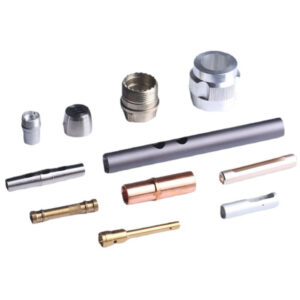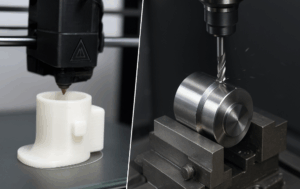In the world of product development, speed and precision are everything. Two of the most common manufacturing approaches—rapid prototyping and traditional CNC machining—offer very different paths to bringing an idea to life. But which one makes the most sense for your project? Let’s break it down in plain language.
What is Rapid Prototyping?
Rapid prototyping is exactly what it sounds like: quickly creating a model or working version of a design. Using technologies such as 3D printing, stereolithography (SLA), or selective laser sintering (SLS), rapid prototyping allows engineers and designers to test ideas in hours or days instead of weeks.

The biggest appeal? Speed and flexibility. You can make a design change in the morning and have a new version in your hands by the afternoon. For startups, inventors, and R&D teams, this ability to experiment without huge costs is game-changing.
What is Traditional CNC Machining?
CNC (Computer Numerical Control) machining is the gold standard for precision and durability. It uses subtractive processes—cutting, drilling, and milling away from solid blocks of metal or plastic—to create final parts with extremely tight tolerances.
Unlike rapid prototyping, CNC machining doesn’t just produce a sample; it produces end-use quality parts that can withstand demanding applications in industries like aerospace, automotive, and medical devices.
The Key Differences
Here’s a quick side-by-side look:
| Feature | Rapid Prototyping | CNC Machining |
|---|---|---|
| Speed | Extremely fast (hours to days) | Slower setup (days to weeks) |
| Cost | Lower for prototypes | Higher upfront cost |
| Materials | Plastics, some resins, limited metals | Wide range of metals & engineering plastics |
| Precision | Good for models & fit testing | Excellent for final parts |
| Scalability | Best for small runs & testing | Ideal for production-scale parts |

When to Use Rapid Prototyping
-
Early-stage design testing
-
Proof-of-concept models
-
Low-volume runs where cost and speed matter more than durability
Rapid prototyping shines when you need to fail fast and learn quickly.
When to Use CNC Machining
-
High-performance parts with exact tolerances
-
Production runs where repeatability is key
-
Parts requiring robust materials like aluminum, titanium, or steel
CNC machining is the choice when precision and strength outweigh speed.
Finding the Balance
In many cases, the smartest approach is not choosing one over the other, but combining both. A design team might use rapid prototyping to refine a concept, then move to CNC machining once the design is locked in and production-ready. This hybrid workflow saves time and reduces costly mistakes.
Final Thoughts
Rapid prototyping and CNC machining are not rivals—they’re complementary tools. If your goal is to experiment and iterate quickly, rapid prototyping wins. If you need durable, high-precision parts for real-world use, CNC machining takes the lead.
Ultimately, the right choice depends on where you are in your product journey—brainstorming on the whiteboard, or ready for the factory floor.
